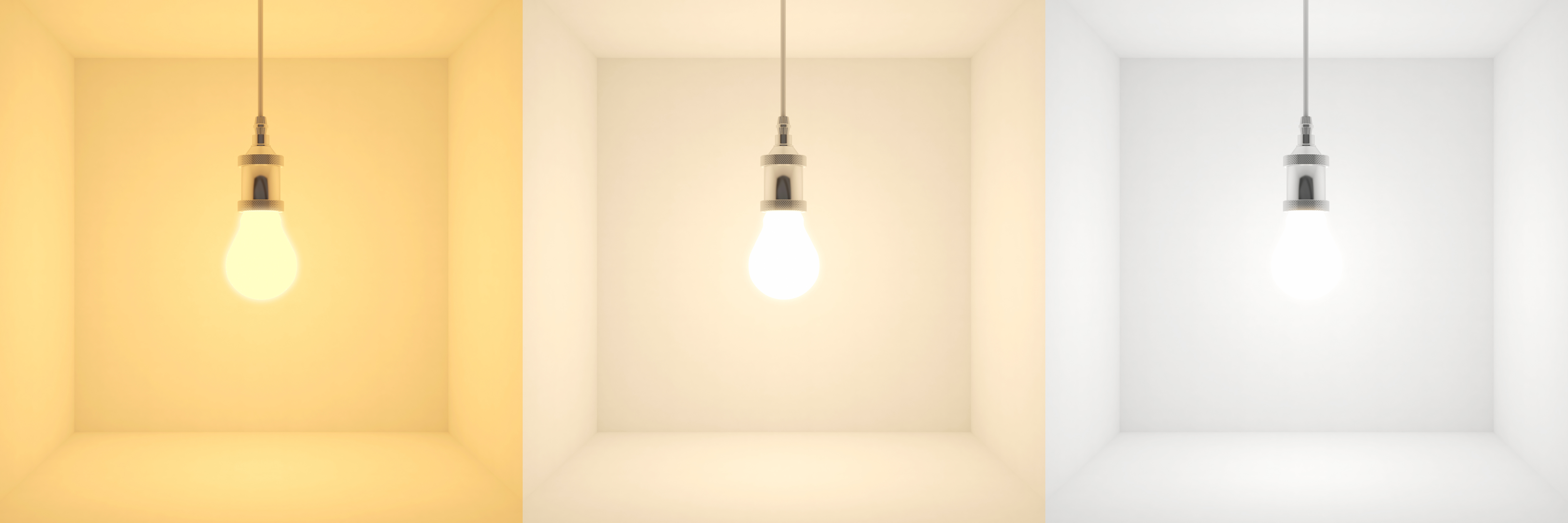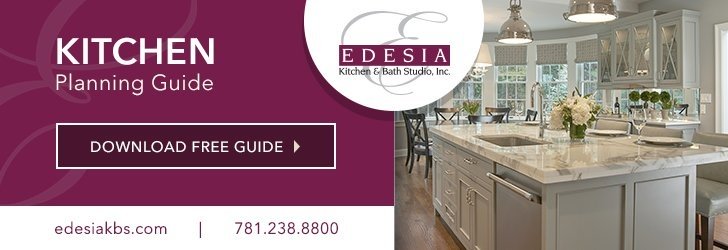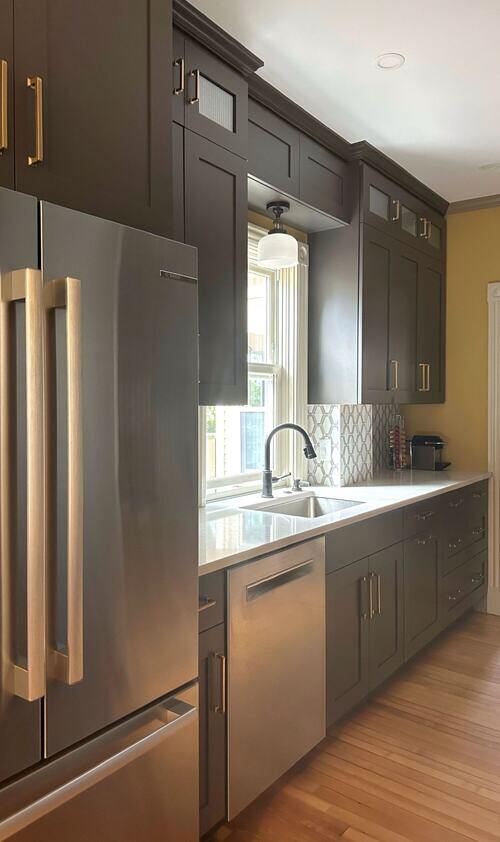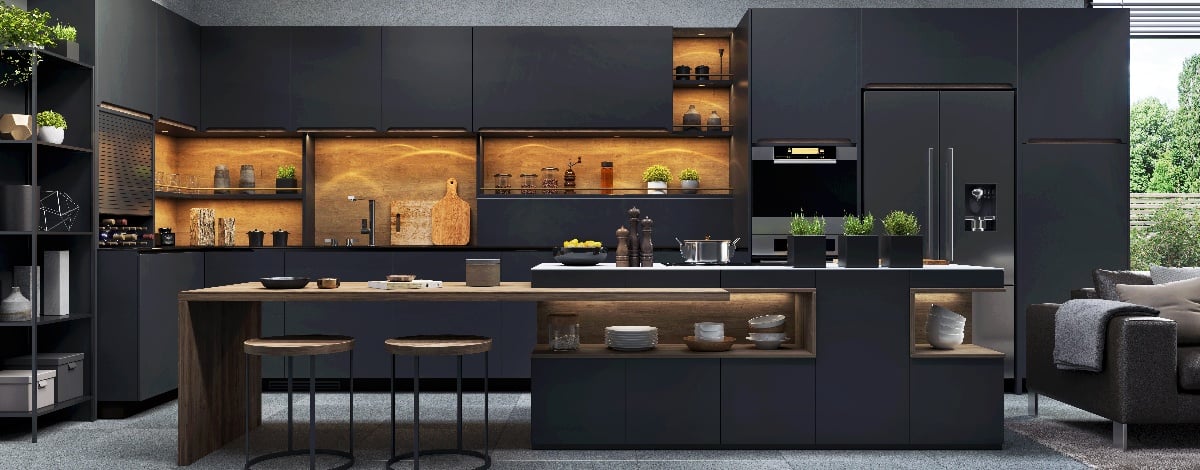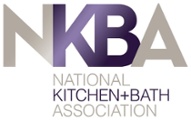The average home serves many functions. It serves as a place to relax and unwind at the end of the day, as well as a place to reconnect with family members. It's also a place where certain daily functions and tasks must take place.
Especially in the kitchen, where individuals are preparing meals and likely working with sharp utensils and potentially dangerous cook tops, it's important to have sufficient illumination in order to prevent injury.
This article discusses LED lighting, the various colors available, and how selecting the right type of bulbs will provide the optimal lighting level for each task within the kitchen.
LED Colors Explained
LED color temperatures determine whether a bulb distributes "cool" or "warm" light. Warmer color temperatures allow a room to be bathed in light that gives a sense of relaxation or coziness. LED bulbs with a higher color temperature, emanate a crisp, more refreshing sense of illumination.
When selecting the ideal bulbs it's important to consider three aspects pertaining to light bulbs.
These include:
- Wattage.
- Lumens.
- Temperature.
Many people traditionally focused only on bulb wattage, however wattage is only the measurement of the amount of energy required to use a bulb. To select the ideal bulb, it's also important to consider both the lumens and temperature (Kelvin). Lumens is the measure of the brightness of a bulb. The Kelvin scale shows the range of bulb temperature.
For some tasks, it's important to have bulbs that emanate a significant amount of brightness. In this case, it would be important to select bulbs with a higher lumens figure.
To create a more relaxed look and feel in a room, bulbs on the lower end of the Kelvin scale would be the correct choice. Of course conversely, if one wanted a crisp look in certain areas of the kitchen, bulbs on the higher end of the Kelvin scale would meet that requirement.
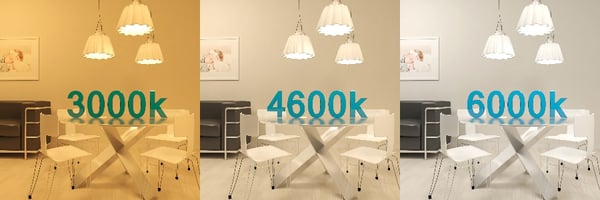
Tailoring Lighting to Tasks
Now that one understands LED bulbs and specifically, what temperature color means, it's time to consider all the various activities that family members carry out in the kitchen area. As it turns out, there are actually quite a few activities that take place in the kitchen, although the number of activities will vary from household to household.
At a minimum, one must add sufficient lighting for the more dangerous tasks that take place in a kitchen. Cooking requires bright, crisp lighting in which to safely carry out activities such as working with very hot temperatures, using sharp utensils, as well as operating potentially dangerous equipment such as meat slicers, or anything else with a blade such as blenders, food processors, etc.
Of course, kitchen areas may also play other roles such as acting as a mini-office where children may complete after school homework, or where a household member uses desk or island space to operate a home business. Kitchens are also typically a part of an area where households entertain guests, or simply gather in the evening as a family.
Lastly, it's not uncommon for a late-night snacker to need subdued lighting in the kitchen, so they can grab a bite without disturbing the rest of the family.
Blending the Optimal Lighting
Whether a household is going through the process of building a new home, or if they are undergoing a remodeling project, it's important to consider all the various activities they plan to accomplish in the kitchen area. Once that is known, it becomes easier to select the optimal lighting fixtures.
To help keep potentially dangerous tasks as safe as possible, it's important for cooks to have sufficient spaces where "cooler" LED bulbs are used. This type of lighting is typically installed underneath kitchen cupboards, perhaps over a desk, as well as over a kitchen island in the form of recessed lighting.
At other times, a kitchen requires more restful lighting in order to provide an intimate atmosphere for entertaining, a hint of soft lighting for a just-before-bedtime snack, or perhaps to highlight decor within glass-covered cupboards. This type of softer lighting is accomplished through the use of LED bulbs rating lower on the temperature scale.
Summary
The ideal kitchen lighting ensemble will be layered in such as way as to work seamlessly in terms of function, but it will also offer high levels of beauty and style that complement a kitchen's overall decor. Let us help you design a kitchen that is outstanding, both in terms of style and function. Please contact us today to begin designing the kitchen of a lifetime.

